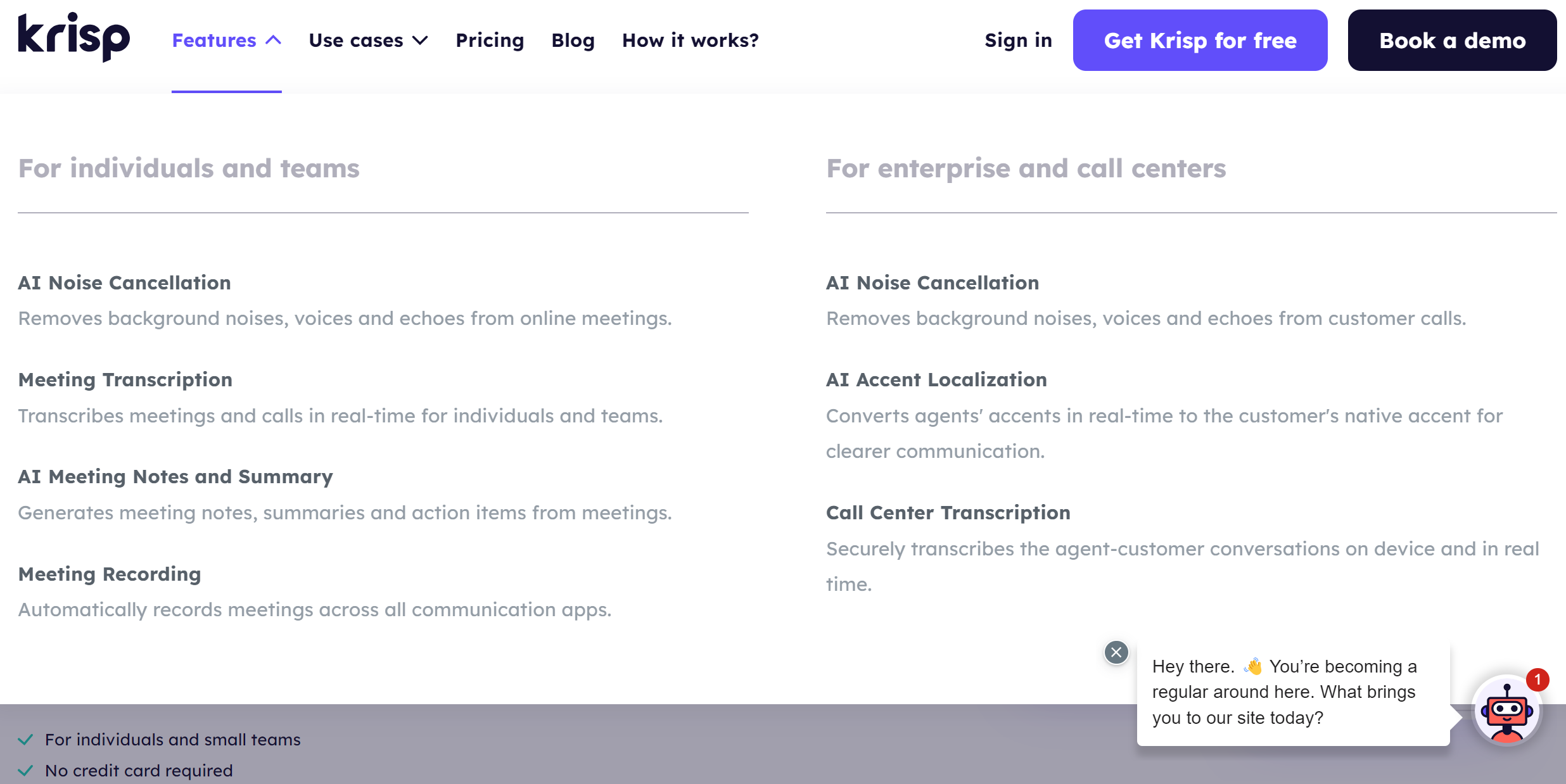Think about this for a moment: You’re a company owner trying to keep everyone rowing in the same direction in your company, but you don’t know how. That’s where an all hands meeting steps in to help stay afloat in turbulent waters.
This guide will walk you through the all hands meeting meaning, how to run it effectively, and what best practices to use. Moreover, you’ll learn how to utilize an AI meeting assistant to make virtual gatherings productive and engaging and unite employees.
Key Takeaways:
- Also called town halls, all hands meetings are company-wide online or offline gatherings that include employees and managers from all levels.
- A town hall aims to bring company members together to share updates, discuss information and company culture, align goals, celebrate wins, and address concerns or questions all at once.
- An AI meeting assistant designed to eliminate noise, record remote meetings, and automatically transcribe and take notes can make meetings productive, enhance communication and collaboration within companies, and foster a sense of unity.
What Is an All Hands Meeting?

The name is derived from the phrase “all hands on deck,” a signal calling all ship crew members on deck. Specifically, all hands meetings can be online or in-person and occur monthly, quarterly, or annually, which we’ll discuss below.
Importantly, they’re more vital for remote, distributed, or hybrid teams, as they interact face-to-face less often. What’s more, opinions expressed during these strategic symposiums can be game-changers and move things forward.
How do all hands meetings differ from typical team meetings? The first ones more effectively keep the entire company on the same page and are great for companywide announcements. The second ones are more valuable for specific project updates.
What Is the Purpose of an All Hands Meeting?

All hands meetings aim to get everyone on the same page regarding company goals, initiatives, vision, and strategies. After all, departments, teams, and employees can miss the big picture by getting wrapped up in their specific tasks.
But that’s only part of the story. All hands meetings aim to:
- Build unity around business goals and strategies by sharing experiences and discussing roadblocks.
- Reinforces company culture, which can be abstract and hard to grasp. Namely, sharing company values and discussing the behavior of leaders who embody them cultivate a value-driven environment.
- Enable leaders to gather different opinions and ideas to arrive at the best possible conclusion. For example, business advisor Glenn Llopis said, “Your voice can challenge the company’s status quo and cultivate innovation.”
- Allow employees to surface rarely-seen large-scale questions about the company’s operations.
- Enjoy a healthy debate based on different opinions to learn new viewpoints, possibilities, and experiences.
- Enable managers to discover talent and look at employees with a new perspective based on the opinions expressed during meetings.
- Create a positive and supportive company culture by discussing progress, recognizing achievements, and celebrating milestones.
- Build transparency and honesty by sharing performance updates, challenges, and plans.
- Let leaders assess the company’s health and make informed decisions through shared feedback and Q&As.
- Bring together remote employees, ensuring trust and effective communication without frustration.
- Help quickly spread critical information and adapt strategies in times of crisis or major change. Thus, leaders can proactively address concerns, outline action plans, and manage the situation.
How Often Should a Company Have All Hands Meetings?

Companies usually host monthly, biweekly, or weekly all hands meetings. Precisely, quarterly meetings are typical for companies that aren’t fast-paced. Once decided, the meeting organizer should schedule them as recurring meetings on participants’ calendars.
Smaller companies can host these gatherings weekly to maintain close communication. And larger companies usually hold all hands monthly, as bringing hundreds or thousands of people together at once is challenging.
The good news is that modern conferencing tools help connect large groups more easily. For instance, an AI meeting assistant developed with productivity in mind removes background noise, automates transcriptions during remote meetings, and records them flawlessly.
As a result, hosting an all hands meeting online has become effortless and effective, enabling companies to organize them frequently.
Overall, the frequency depends on whether the company faces rapid changes, prioritizes transparency, and launches projects frequently. For example, companies must share their yearly plans at the start of the year.
Moreover, companies adjust the frequency based on employees’ feedback regarding the effectiveness and impact of these gatherings. So, it’s always good to experiment weekly and monthly to come up with the best solution.
How to Run an All Hands Meeting Effectively?
Leaders are often worried about running meetings effectively so employees can speak up and share ideas without confusion or frustration.
So, how can you, as a leader, invite participation and expect proactive responses? Moreover, what if opposing opinions lead to conflict, leaving no space for consensus?
For example, I remember a company hosting dry, data-heavy, and disengaging all hands meetings. And when leaders shifted those gatherings to a more interactive format, focusing on storytelling rather than statistics, they witnessed a 30% increase in employee engagement scores.
They created segments like “Behind the Scenes,” in which different teams shared insights into their daily work. As a result, the company became more transparent and exciting to all employees.
Now, let’s dig deeper to learn to hold all hands meetings effectively.
Prepare for Your Meeting
Step 1: Create Your Meeting Agenda
Consider an agenda like this one that includes:
- Welcome & icebreaker (5-7 mins)
- Company updates (15 mins)
- Departmental highlights (20 mins)
- Special topics (20 mins)
- Guest speaker or special presentation (10 mins)
- Q&A session (15 mins)
- Recognition & awards (10 minutes)
- Closing & feedback (5 mins).
Step 2: Change the Meeting Venues
For instance, choose a large conference room, auditorium, or fun off-site space. However, ensure it comfortably accommodates the entire staff and supports technology for presentations and remote participation.
Step 3: Invite All Relevant Attendees
The all hands meeting attendees include:
- The executive team
- Chief financial officer (CFO)
- Chief operating officer (COO) and other C-suite executives
- Department heads and managers
- All employees
- Remote workers.
Step 4: Survey the Employees
Send out a survey a week before the meeting to gather questions and topics of interest. Because this helps gather input on topics employees are interested in discussing.
Step 5: Go Through a Dry Run
Run a technical rehearsal to avoid hiccups, especially when using new technology or formats.
During the All Hands Meeting
Step 1: Start Strong
Kick off with a compelling story or a valuable company milestone or celebrate accomplishments since the last gathering. This also applies to nonbusiness achievements, such as marriage and milestones. Also, consider starting with a meeting icebreaker.
Step 2: Keep the Meeting Moving
- Include informative updates
- Incorporate live polls or real-time feedback
- Give everyone a chance to ask questions
- Ask employees to submit questions or discussion topics in advance
- Listen to diverse groups of presenters with varying ideas
- Let each department discuss its news and achievements or project updates
- Plan five-to-ten-minute small group discussions
Step 3: Communicate Clearly
- Communicate your message through compelling visuals, such as slides and videos, to make your speech memorable.
- Ensure an all hands meeting environment of mutual respect so participants can engage in dialogue without conflicts. Interestingly, American educator Stephen Covey wrote that members should be encouraged to understand one another first and then expect others to understand them.
- Invite an expert or a coach to get a fresh perspective and enhance engagement.
Step 4: Ensure Post-Meeting Follow-up
- Distribute a recap with a video recording, main takeaways, and action items.
- Solicit feedback for continuous feedback: What worked? What didn’t?
- Facilitate post-meeting follow-up using an AI meeting assistant designed to automate transcription and note-taking.
Krisp Connects People & Boosts Productivity of All Hands Meeting

“The future of human sociality lies in understanding and consequently shaping online interaction,” said psychologists Lieberman & Schroeder.
And AI meeting assistant Krisp is committed to making your online all hands meeting productive, effective, dynamic, and effortless, enhancing virtual communication and helping people connect better.
Let me show you how:
- Krisp’s AI Meeting Transcriptions help people unite and foster team identification: This automated, multilingual transcription feature transcribes calls and meetings in real time and with 96% accuracy.
Thus, it enables participants to discuss core issues and share ideas instead of focusing on transcribing or creating an all hands meeting template. Additionally, it helps manage the overwhelming amount of meeting data, which is especially critical for larger companies.
- Krisp’s AI Meeting Notes & Summaries keep members in sync: This feature generates meeting notes, summaries, and action items by reflecting key meeting elements.
With the essential meeting information at hand, team members become more organized, enthusiastic, and driven to accomplish their goals.
- Krisp’s Meeting Recording creates transparency and accessibility: This feature automatically captures all hands meetings with high-quality audio. Importantly, it’s compatible with any virtual conferencing app or platform, including Zoom and Google Meet.
Thus, this feature transforms your meeting into a memorable source of information that you constantly revisit to review. Additionally, it turns your meetings into more accessible, open, and actionable resources to boost productivity and collaboration.
- Krisp’s AI Noise Cancellation eliminates distractions from online meetings: This feature removes background noises, voices, and echoes in real time.
Specifically, Krisp’s advanced Voice AI technology ensures best-in-class audio clarity to let you engage in meetings more productively and effectively. So you can focus on what matters most during online gatherings.
All Hands Meeting Best Practices
All hands meeting best practices offer working standards or guidelines for good outcomes. Let’s get started.
1. Timing is Everything: Decide your meeting frequency and create a schedule that respects everyone’s time. And we’ve already discussed the frequency above. What about the best time of day? Well, mid-morning or late afternoon typically sees peak engagement.
2. Avoid Mundane Meetings: According to a Harvard Business Review study of over the past 50+ years, meetings are taking longer hours and becoming more frequent. Did you know employees shy away from long and boring meetings? So, maintain a strict agenda, allocate specific times for each segment, and prepare concise presentations.
3. Keep It Interactive: People want to avoid sitting through a monologue. How can you turn an all hands meeting into a two-way conversation? Use live polls, Q&A sessions, and even interactive quizzes to keep the energy up. And avoid overshadowing introverts.
4. Streamline Your Agenda: An all hands meeting without a clear agenda is like a ship without a rudder going off course. Moreover, prioritize updates that affect the entire company. Additionally, include finance, HR, major project milestones, and strategic pivots.
5. Celebrate Achievements: Here’s something you’ll want to remember: recognition fuels motivation. So, take time to shine a spotlight on team and individual accomplishments. Maybe your sales team has surpassed its quarterly targets. And what about the development team’s release of a new feature ahead of schedule?
6. Address the Elephants in the Room: Transparency builds trust, prevents misinformation, and keeps everyone on the same page. So, are there rumors about funding or layoffs? Address them head-on.
Final Word
The goal of an all hands meeting is to keep every team member informed, engaged, and aligned with the company’s goals, mission, and culture. When properly executed, these meetings foster a united and motivated workforce.
The guide above discusses how to make all hands meetings flexible, effective, and innovative to inspire and unite the entire team. And AI meeting assistants like Krisp can significantly enhance meeting productivity, engagement, and effectiveness.
Frequently Asked Questions


